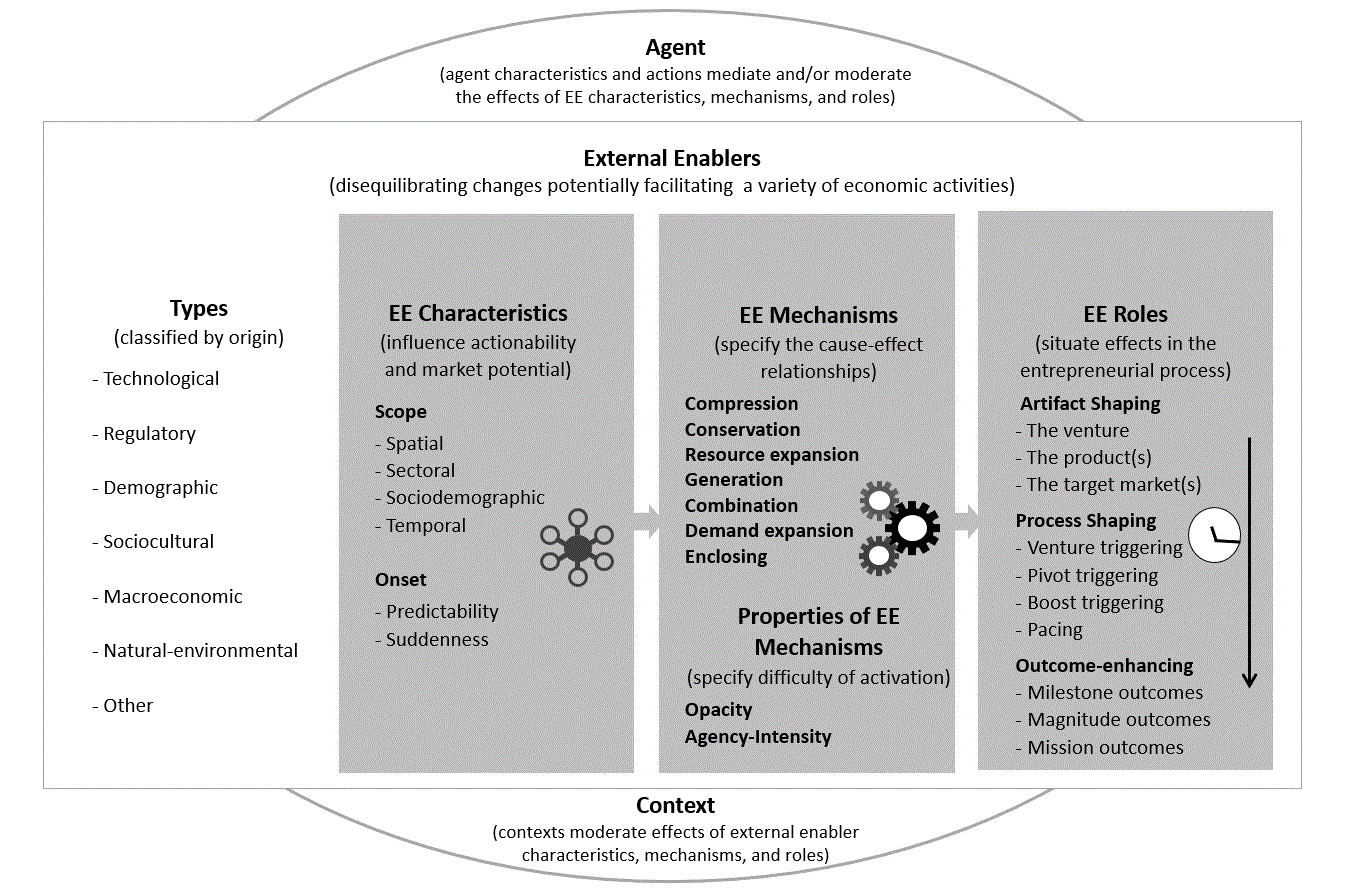


The External Enabler Framework
The term ‘external enabler’ (EE) is a collective label for nontrivial changes to emerging and established organizations’ (macro) environment, such as new technologies, regulatory changes, demographic and sociocultural trends, and changes to the natural environment (see “Types” in the above figure). Two fundamental assumptions of EE scholarship are that all such changes benefit some organizations, and that different types of change can offer similar benefits and potentials for strategic action. These commonalities justify treating them with common terminology within a unified framework.
Expanding the EE concept to the EE framework, we aimed at identifying (a) sources of variance in environmental changes that (b) apply to several types of such changes (technological, regulatory, sociocultural, etc.) and which have (c) strategic implications, that is, they affect what can be achieved, and by whom. Accordingly, the EEF offers structure and terminology for the forms, functions, and outcomes of EEs. As depicted in the above Figure, this is done using the notions in the grey-shaded, core area of the figure, namely EE-level characteristics, venture-level mechanisms (including the opacity and agency-intensity properties of such mechanisms), and the roles these play in the process of entrepreneurial activities (for example, venture creation or growth). All of these are assumed to affect who and what are likely to benefit, how they can benefit, and how much. Thus, EEs can help improve performance and competitive advantage.
The EE framework recognizes the contributions other theories and frameworks make regarding the white parts of the figure and is intended to be used in combination with such theories and frameworks. However, the EEF itself focuses on adding and deepening insights regarding the shaded parts of the figure, which are otherwise less developed.